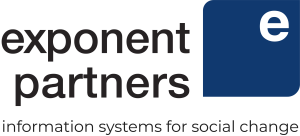Case Study: Institute for Family Development
Highlights
- Improved Efficiency for Billing Tasks: Reduced billing prep time for programs by 80%
- Increased Access to Custom Reports: Instead of waiting up to a month for a custom report, users can create their own in minutes
- Allowed Staff to Focus on Value-Added Tasks: Administrative staff no longer pull data from multiple sources—saving them 10–15 hours per month
“Having a single system used by all teams reduces our administrative requirements substantially, while allowing us to easily report on outcomes across programs.” – Mary Lynn Antush, Assistant Director, Institute for Family Development
Client Description
The Institute for Family Development (IFD) provides a range of innovative and cost-effective in-home services to children and families. IFD’s mission is to develop, deliver and disseminate evidence-based child welfare programs to keep children safe, strengthen families, and reduce the need for placing children into state-funded care.
Challenges
IFD implemented an online client information system in 2005. Although the solution offered many benefits over paper records, as the years passed, the legacy system’s cons out-weighed the pros.
Inability to scale with the organization
With IFD’s HOMEBUILDERS® model being replicated across the country, the lack of scalability presented challenges and created numerous data silos. “Our legacy system couldn’t accommodate all our teams in a single system,” explained Mary Lynn Antush, Assistant Director, Institute for Family Development. “As a result, we operated five duplicative systems serving various team groupings.”
Difficulty creating reports
Without the ability to automatically limit the information that was included in a report, IFD’s legacy system couldn’t be opened up to all users for self-service. Instead, an administrator had to create unique reports for every team throughout the country to ensure data security and privacy protection. Limited administrative bandwidth for this task meant that some employees did not have access to the reports that they wanted. Additionally, reporting on outcomes across programs was labor-intensive as it required the administrator to pull information from five systems, export it into Excel, and then dedupe it for analysis.
Complex billing processes
Billing forms for several of IFD’s programs in Washington required administrative staff to produce detailed billing reports in a format that met funders’ requirements. Employees had to pull the data from the organization’s legacy system, rekey it into Word or Excel, and then package it in a specific way before it could be sent to a funder. This involved process left administrators with less time to provide therapists with much needed support.
Desire for enhanced user-friendliness
An easy-to-use system would minimize training requirements, while increasing user adoption and ensuring model fidelity as the HOMEBUILDERS Program expanded to other states beyond Washington. The concept of having a system that is mobile-friendly was also of interest as it would boost productivity for practitioners when they are in the field doing client work.
Solution
With changes to state requirements around data security and data protection, combined with the fact that IFD’s legacy software was no longer going to be supported by its vendor, IFD was motivated to find a new solution for its client information needs. The organization was clear on its requirements. First, IFD wanted a solution that could accommodate all teams implementing the HOMEBUILDERS model, and allow the sharing of information across case records, employee records, and team records. Second, the system had to meet all HIPAA requirements, along with a host of documentation requirements associated with clinical interventions. Third, enhanced reporting features were a must-have, not only to meet funders’ needs, but also for IFD’s own fidelity management. Finally, an intuitive user interface was essential to maximize adoption and facilitate a smooth transition between systems. Since the solution would be used by partner agencies, in addition to the nonprofit’s staff, security and accessibility were also top of mind for IFD.
IFD evaluated several options, but quickly dove deep into Exponent Case Management (ECM). “We were just really excited about ECM from the beginning, largely because it was on the Salesforce platform,” explained Mary Lynn. “We knew that it was going to keep up with the times, rather than fall behind them, due to Salesforce’s constant innovation and heavy investment in ongoing development.”
“In today’s environment, having data that is clear, accurate, complete, easy to access, and that looks good is important,” stated Mary Lynn. “ECM was able to check all those boxes and more.”
In an effort to get set up quickly and simply without putting too much strain on resources, IFD opted to use Exponent’s ECM Start-up Service and focused initially on the institute’s HOMEBUILDERS program. ECM has since been expanded to support all 10 services that IFD offers.
The adoption of ECM has impacted a broad range of IFD’s key stakeholders:
- Program staff are using ECM as their main client information system, entering all client contact information and assessment information into a clinical record. They rely on the summary information in the record to guide the services provided throughout the intervention.
- Supervisors get up to speed quickly by reviewing the summary information, as opposed to digging deep into records. These summary fields also serve as important measures of model fidelity, allowing the monitoring of clinical services and tracking of activities.
- Staff in the Training and Consulting Division use ECM to monitor the model fidelity of local and out-of-state teams. They create site review reports as needed and use data from ECM to review the activities for a specific family when they participate in a consultation.
- Administrative staff generate reports via ECM, and send them to referents, funders, and providers.
On a big picture level, leadership can see the effectiveness of the HOMEBUILDERS program, monitor teams’ performance, and track the number of placements that IFD has prevented.
Results
IFD’s implementation of ECM kicked-off in late 2016, and the organization went live with the solution in Spring 2017. The nonprofit now has 360 users on ECM across 50 teams, nationwide. The breadth of ECM’s impact is impressive and has been truly transformational for IFD.
Consolidated systems, while enabling scalability and flexibility
ECM eliminates the need for multiple systems, and scales with IFD as the organization grows. The capacity to exchange data through an API for coordination with other electronic records will also be a benefit for some of the agencies in the future. According to Mary Lynn, “This functionality is important because some of IFD’s provider agencies are using separate medical records systems for other programs they provide.”
Simplified report creation process
“We no longer have to gather data from multiple reports and systems, export it into Excel, and then rearrange it,” said Mary Lynn. “With ECM, we can pull in data from the user record, case record and even agency record into the same report.” In a single click, the interface with Conga Reports allows ECM users to immediately generate pre-formatted reports that are ready to be sent to the referent without any additional tweaking.
Enhanced security features
Prior constraints related to data security have been addressed by ECM, thereby empowering staff. According to Mary Lynn, “Thanks to the Salesforce reporting tools, teams can take responsibility for their own reporting requirements, freeing up administrator’s time.” Based on Salesforce, ECM also provides the level of security needed to maintain HIPAA compliance for medical records.
Gained valuable insights into outcomes and model fidelity
“We are now able to generate many different types of reports— across all programs/agencies—that help us show model fidelity and outcome measures,” explained Mary Lynn. IFD’s caseload dashboard, for example, provides real-time data regarding how clinicians are progressing towards their annualgoal of serving a specific number of clients. With ECM’s roll-up features, practitioners can easily and quickly see the number of interventions they are averaging each week. This key indicator lets both the practitioner and their manager know if their performance is on-track. Similarly, exporting to Excel and creating formulas is no longer required for pro-rated intervention counts and the number of weekly consultation meetings. These key measures are now generated automatically, and real-time data is easily accessible.
Simplified billing processes
ECM makes the billing process substantially easier for several of IFD’s programs as billing reports are now created automatically in a format that staff can send without making any changes. “Before, it used to take us up to 10 minutes to prepare the billing form, but now it takes about 2 minutes,” explained Mary Lynn. (In 2017 alone, these programs served more than 1,300 families.) The automation of this process gives administrative staff more time to support therapists, which in turn means that therapists can dedicate more hours to providing clinical services.
Easier to use and more accessible
ECM’s intuitive user interface has made the system easy to learn and has enabled its rapid adoption across the organization. “ECM is definitely easier to navigate and is more intuitive than our legacy system,” explained Mary Lynn. “Both ECM and Salesforce mirror the technology that we use in our daily lives, and that increases adoption of the tool with minimal training.” Field-Level Help enables clinicians to easily and quickly access in-context definitions and instructions, which are used to accurately complete assessments. ECM’s mobile feature allows practitioners to enter their service notes in between clients, while the details are fresh in their minds, rather than waiting until they have a WiFi connection. According to Mary Lynn, “I see only upside ahead of us with ECM.”




